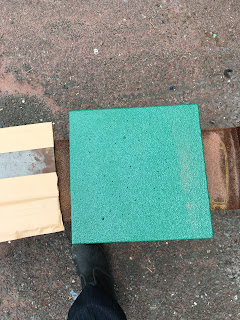中国産 ガーネットとインド産の違いは?の質問に対しての回答
Aさんの回答
India garnet sand is river garnet sand, is more clean than rock garnet sand, China garnet sand is rock garnet sand,rock garnet sand has a higher hardness than river garnet sand. So we can say,the river garnet sand is suitable for water jet cutting, the rock garnet sand is more suitable for sandblasting. Besides, garnet sand 30/60 mesh 20/40 mesh are the normal sizes for sandblasting.
India river garnet sand is pink color,China rock garnet sand is deep red color.
India river garnet sand is expensive than China river garnet sand.
B さんの回答
There are different kinds of abrasive garnets which can be divided based on their origin.
The largest source of abrasive garnet today is garnet rich beach sand which is quite abundant on Indian and Australian coasts and the main producers today are Australia and India.
This material is particularly popular due to its consistent supplies, huge quantities and clean material. The common problems with this material are the presence of ilmenite and chloride compounds. Since the material is being naturally crushed and ground on the beaches for past centuries, the material is normally available in fine sizes only. Most of the garnet at the Tuticorin beach is 80 mesh, and ranges from 56 mesh to 100 mesh size.
River garnet is particularly abundant in Australia. The river sand garnet occurs as a placer deposit. Rock garnet is perhaps the garnet type used for the longest period of time. This type of garnet is produced in America, China and western India. These crystals are crushed in mills and then purified by wind blowing, magnetic separation, sieving and, if required, washing. Being freshly crushed, this garnet has the sharpest edges and therefore performs far better than other kinds of garnet. Both the river and the beach garnet suffer from the tumbling effect of hundreds of thousands of years which rounds off the edges.
Gさんの回答
As requested, I am pleased to provide my technical writings on the differences between the Chinese Garnet vs. the Pan Abrasives Premium Indian Garnet.
Please note that Garnet from China is ROCK garnet which basically means that this garnet is recovered from the process of crushing the rocks and hence the garnet has large amount of associated contamination and foreign particles, Rock garnet breaks extremely fast on impact from blasting in comparison than premium quality alluvial garnet due to the stress lines / fractures generated during the crushing process of the rocks.
Pan Abrasives Indian Garnet is 100% alluvial garnet recovered from the ocean side mines on the East coast of India and is a naturally forming garnet particle that is free of any stress line fractures. We process the garnet by washing it twice with fresh water to ensure the LOWEST chloride content and minimum silt in the final product.
さすが、Gさんはこの後、かなりの長文で説明してくれてあり私も完璧に理解した。
なので、まず、私自身で測定してみた結果
溶可性塩分は5 ppm
電気伝導度5.5,6.5,8.3 mS/m
以上により予想に反して全く問題ない。
純水対する透明度は最悪なのだが、錆に関しては無関係。
粉塵度は別の規定なので、検査はしない。
中国国内で水洗いしてないようだが、汚染された水で洗うよりはマシなので良い。
外観は当然、真っ黒でインドやオーストラリアのアルマンダイトガーネットとは違う。
確かに、米軍が使うのも理解できそうである。塩分を嫌う彼らは、地球の歴史で安定化した物質=鉱物を選択した。要するに、粉塵は
ガーネットクリーナーで選別してからブラストすればいいじゃないか、という考えなわけだ。
見た目が、インド産のほうが当然宝石として流通してるので綺麗だ。完璧に洗えば、インド産がいいのに決まってる。
ちなみに、何度も申し上げているが、オーストラリア産なんてものは、すでに粗目(#16~#20~#40)は枯渇している。インド産をオーストラリアの完璧な洗浄マシンに投入しているのだ。
少なくとも10年以上前には存在していない。細目だけだ。
#80というやつだ。これは、私のほうしか手に入らないのだが、さすがにインド産#80ガーネットと違って、半端なく硬い!!なので、アルミナの代替品として販売すると、入れ替わるのだが、ユーザーが勝手な判断でいつの間にか、無知な販売店からインド産を購入していることがある。安いからだ。
結局、消耗が激しくコストが高くついているのだが、仕方ない。だまって、放っておくしかない。
硬さの違いは、ノズルで粉砕が起こるので、話にならない。
海外でのもう一つの騙しのテクニックとして、イルミナイトとクオーツを混入する方法が常套手段として採用されている。一般の日本人のユーザーなら簡単に騙されるだろう。
そもそも、インチキSDSシートや袋の表示を結構マジで信じてる人が多い。
確かに化学分析会社に出すと高い。しかし、ある程度なら自分でできるはずだ。
少なくとも電気伝導度と、PHくらいは毎回測定できるように私の塾生及び友好なお客様には指導している。
私は、店で売ってるペットボトルの水でさえ測定してからコーヒーの水として採用する。
なので、初めから研削材は全て信用などしていない。自分で確かめてから評価し販売する。
ISOやJISではアルマンダイトガーネットしか認めていない。
しかし、心配することはない、アンドライダイトのほうが、希少で高価なので、ブラスト研削材に回すほど余裕はない。
アルマンダイトと、アンドラダイト
Almandine Fe3Al2(SiO4)3
Density: 4,1-4,3 Hardness: 7-7,5
Color: Dark red, brownish black
The major garnet for industrial use.
Andradite Ca3Fe2(SiO4)3
Density: 3,7-4,1 Hardness: 6,5-7
Color: Yellowish green; greenish brown, red-brown, dark gray, black
(Demantoid variety is green)
Second to Almandine in importance of the garnets.











































